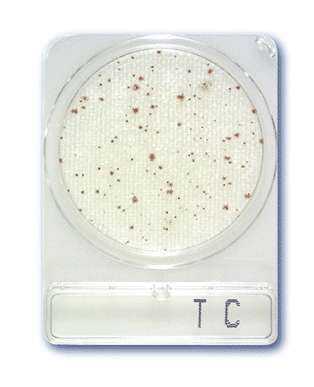Compact Dry TC
- Ready and easy to use portable plate: Preparation of medium is not required, which eliminates waste of medium as well as sterilizing apparatus to prepare the medium.
- Detection of colonies on plate is simple and clear.
- Single colonies on the plate can be isolated for further identification tests
Ready-to-use petri dishes for reliable microbiological analysis for Total Count.
Compact Dry TC is a medium for total viable bacterial count, which contains nutrient standard agar. The colonies grown on Compact Dry TC are red due to redox indicator tetrazolium salt.
Regression line data from Compact Dry TC method plotted versus the conventional PCA method (standard plate count agar) shows a good correlation per 100 food samples for the population of me-sophilic aerobic micro-organisms. Compact Dry TC is AOAC, MicroVal and NordVal approved.
Incubation time and temperature: 48 ± 3 hours at temperature as recommended by AOAC 35 ± 2 °C, NordVal / MicroVal 30 ± 2 °C
Shelf life: 24 months after manufacturing
Storage: Room temperature (+ 1 to + 30 °C)
Sample pretreatment
Viable count in water or liquid foodstuff
Drop 1 ml of specimen (dilute if necessary) on the middle of the Compact Dry plate.
Viable count in solid foodstuff
Add buffer solution to the sample and homogenize by stomacher®. Drop 1 ml of specimen (dilute if necessary) on the middle of the dry sheet of the Compact Dry plate.
Viable count in swab test specimen
Use the swab to wipe the surface, put into the device with wiping solution. Drop 1 ml of wiping solution (dilute if necessary) on the middle of the Compact Dry plate. It is recommended to use “Swab for Compact Dry” offered by HyServe Id-No. 1 002 952/3 (40/240 pieces).
Test instructions
1. Open the cap and drop 1 ml of specimen on the middle of the Compact Dry plate.
2. Specimen diffuses automatically and evenly into the sheet and transforms the dried sheet into a gel within seconds.
3. Put the cap again on the plate and write the information needed on the memorandum section.
4. Turn over the capped plate and put in the incubator.
5. After incubation count the number of colored colonies underneath the plate. White paper placed under the plate helps to count the colonies
